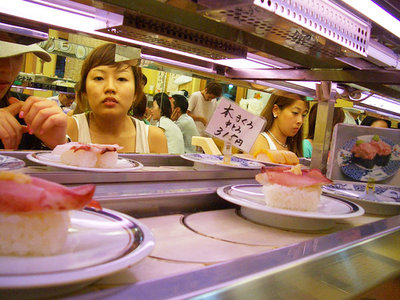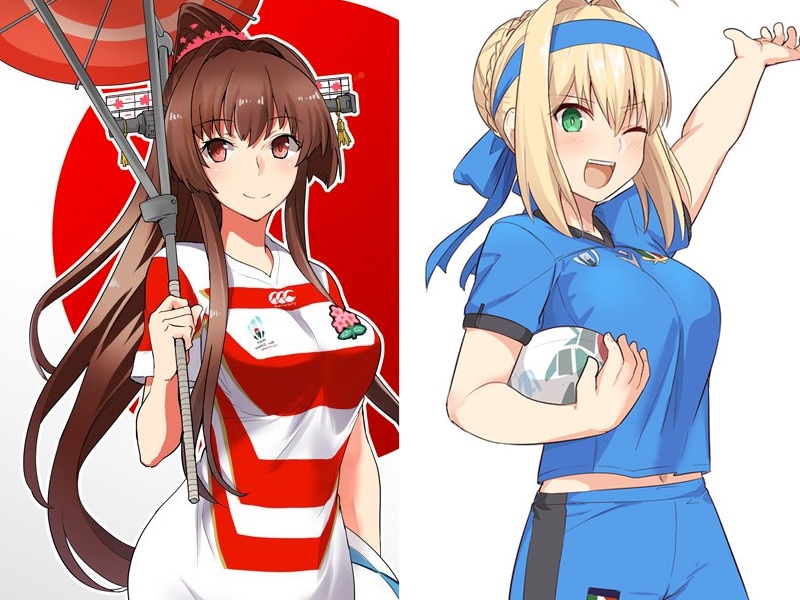One of the more interesting aspects of Japan is the top-down nature of its society, how it’s ostensibly structured in a way that channels more respect to senior individuals in a school or organization, and society in general. When a younger student or junior employee in a company (kohai) sees an older student or senior employee (senpai), it’s expected that he will greet his senior using a formal salutation like Ohayo gozaimasu, while the senior will reply with the more informal Ohayo. In English, I might talk about my brother or my sister without necessarily concerning myself with wether the sibling in question were older or younger than me, but in Japanese these concepts are always split into “oniisan / ototo” and “oneesan / imoto” for older and younger brother and sister, respectively. What about twins, you ask? The one to pop out first is the older one, even if it’s only by a few minutes. Lang- uage always reflects the society that generates it, and there are invisible linguistic lines drawn to preserve the separate-ness of individuals from different groups. For example, the word for “friend” is tomodachi, but this usually only applies to someone of the same age as you, or who entered an organization at the same time as you; for other acquaintances, you’d usually use a different word like junior/senior, colleague, etc. My wife loves watching CSI, turning on the Japanese dubbed track because it’d be a chore for her to understand all the medical terminology, and sometimes I like to listen in. In order to remain faithful to the original English dialogue, the CSI team speak incredibly informally to each other, even to their superiors, something that could not be conceived of in Japan.
The weather was nice over the weekend, so my daughter and I went for a bicycle ride to the park, and as is often the case, I found myself surrounded by kids who were curious about this large gaijin with golden hair on his arms. Whenever I interact with children in Japan, I make sure to take off my sunglasses to avoid scaring them, since kids in Japan don’t have that much opportunity to get used to interacting with foreigners. I also make liberal use of the phrases that kids expect English-speakers to say all the time, like “How are you?” and “Oh my god!” and “Unbelievable!” which got many giggles. As I watched my daughter play and made small talk with the Japanese parents around me, I wondered why I was the only gaijin parent around on a sunny Saturday. With 3% of my city’s population made up of foreigners, mostly from Brazil and Peru, you’d think there’d be more mothers with their kids there, mixing in with the other parents, but there were none to be seen.

The other night we all went out for sushi, and like many people do, we opted for a kaiten-zushi restaurant, featuring sushi on a conveyor belt allowing you to grab what you want as it sails by. Unfortunately for our growling stomachs, a few hundred other customers had also gotten the hankering for sushi, and so we had to wait over an our for a table to open up. This popular alternative to a traditional-style sushi restaurant was invented in 1958 by an enterprising restaurant owner in Osaka who was having trouble staffing his restaurant, so he came up with a way for very a few employees to service many customers at once. According to research, a lot of the popularity of conveyor-belt sushi comes from the way the products scroll by from right to left, which creates a pleasant sensation in the brain as any want can be fulfilled just by reaching out one’s hand. Although there are many cheap sushi restaurants in our city, we’ve been happy to find a few that offer better quality “neta” (the fish-part of sushi) for around $1.75-$3 per plate. Truly, life is too short to be eating cheap sushi.
Many gaijin come to Japan and fall in love with onsen (OWN-sen, 温泉), the famous natural hot springs that have been enjoyed by Japanese for centuries. The best hot springs are, of course, the mixed-bathing variety, called kon’yoku (混浴) in Japanese, which can be quite hard to find (I’ve only found one in my years in Japan). Our newest wacky T-shirt proclaims your affinity for Japan’s bathing culture, featuring a kanji slogan that reads “I love mixed-bathing hot springs,” with the normal “heart” shape cleverly replaced by the “onsen mark,” a symbol that denotes Japanese hot springs. Check out our newest T-shirt now!















